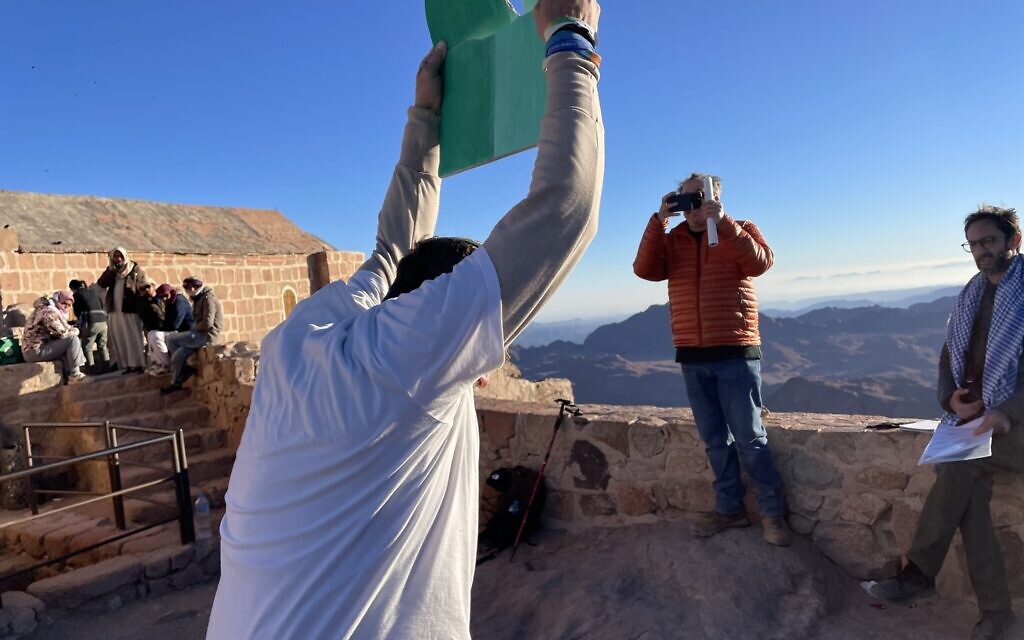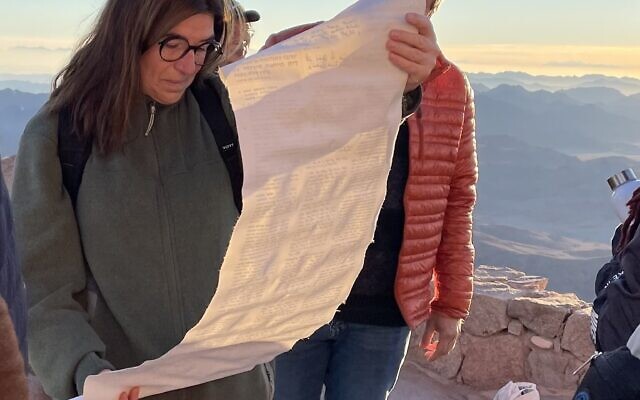
It is time to revisit the City of the Future in Saudi Arabia. They appear to be making a great deal of progress very quickly. Naturally, that is not natural. But, there is a lot of money behind this project because it is a gem for the United Nations and the New World Order.
Before you are finished with this post, I hope you will be able to acknowledge that there is a definite Conspiracy, that the New World Order is a Muslim State with Sharia law, that CLIMATE CHANGE is the tool they devised to bring everyone in line, that the New One World Religion leaves no room for bible believers or the name of Jesus.
I hope you will also come to realize that all these resorts, smart cities and cities of the future are not for you and me. Only those chosen by the elite will live there. These are built for high rollers. Even those humans who survive to work at these places will not be living in them. Well, maybe in the basement. lol.
Open your eyes folks and recognize how close they are to creating the world they imagined. I doubt very highly any of them will stand for very long.
Keep looking up and looking for His soon return. Our DELIVERER is COMING! GOD WILL NOT BE MOCKED!!
spacer
If you have not already seen the following posts, please check them out:
spacer
NEOM – Part 1; Part 2; Part 3; Part 4 |
Saudi Arabia Has Begun construction on the Crown Prince Muhammad Bin Salman’s Neom project. Progress is already being made on Saudi Arabia’s linear city The Line and also its first ski resort called Trojena. Neom’s other mega city projects include Riyadh’s Cube skyscraper called the Mukaab, Sindalah the luxury island and Oxygon a reimagined floating city. Will Saudi Arabia’s other megaprojects also happen like the Jeddah Tower and Pangeos the largest Terayacht? Watch Off the Kirb Ministries video as Joe Kirby explains the significance of all of this and more! #offthekirb #neom #saudiarabia
Saudi Arabia’s $1 trillion Skyscraper Neom
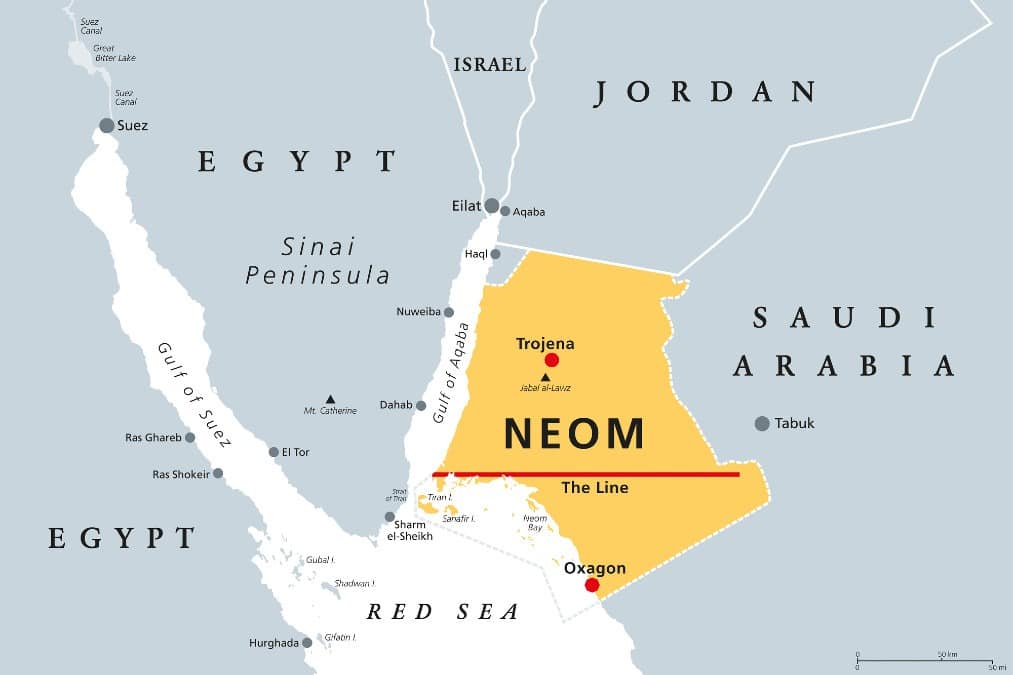

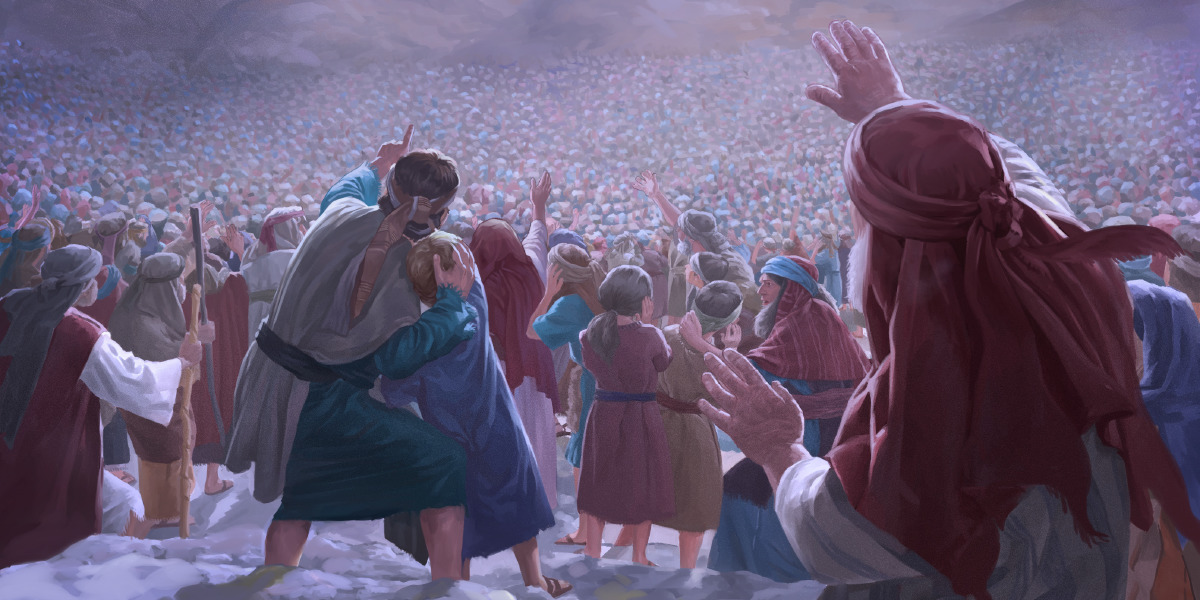
They came to a mountain called Mount Sinai. Moses climbed the mountain to speak to the Lord. The Lord told Moses that He wanted to talk to the Israelites face to face. The Israelites came to the base of Mount Sinai, and the Lord caused a cloud of smoke to surround the mountain.
spacer
I am reminded of the resent ritual we witnessed as the multi Faith leaders climbed to the top of this very mountain to initiate a NEW COVENANT WITH A NEW SET OF 10 COMMANDMENTS, for CLIMATE CHANGE!!
CHECK OUT THE FOLLOWING ARTICLES:
COP27
Things to know – COP27 Summit – Final Days
I Pledge Allegiance to the Climate Agenda
Standing in the Holy Place DECLARING HIMSELF TO BE GOD!
ATTENTION: NOVEMBER 6-18
James Sternlicht, head of The Peace Department, called on faith leaders to take a climate vow: “I, as a person of hope, pledge to make the world a better place for people and planet, each day that I may live.”
“Today, as faiths put aside their differences in a common call for climate action, we work towards a new covenant for mankind in the name of the protection of our common home and for the betterment of our shared human future,”
JEBEL MUSA, Egypt — An initiative to mobilize faith leaders worldwide to push governments to do more about climate change kicked off Sunday morning with an Israeli environmental activist smashing mock tablets of stone atop an Egyptian peak believed by many to be Mount Sinai, to symbolize the world’s failure to protect the planet.
Jebel Musa is Arabic for “the mountain of Moses”, also known as Mount Sinai a mountain on the Sinai Peninsula of Egypt.
spacer
|
Tabuk’s Jabal Al-Lawz (Mount Sinai in Arabia) covered in snow |
|
Trojena: inside Saudi Arabia’s snow-topped mountain … |
|
Jabal Al Lawz, Tabuk: The Best Place To See Snowfall In Saudi Arabia |
|
So, the TROGENA SKY RESORT is being built on the Mountain of the LORD!! WHERE GOD MET WITH MANKIND!! WHERE GOD DECLARED HIS COMMANDMENTS!.
|
The name TROJENA very clearly means to TRUST in THE PROMISE OF PARADISE. or TRUST IN ALLAH!!
| tro wiktionary.org From Old Norse trúa, from Proto-Germanic *trūwāną (“to trust”), cognate with English trow and German trauen. Derived from the adjective *trūaz (“trustful”), see … |
| Meaning of Jena Hawramani.com Variant of the name Jannah, which is mentioned in the Quran. « Jemileh. Arabic · Jemma. |
| Jannah Wikipedia In Islam, Jannah (Arabic: جَنّة, romanized: janna, pl. جَنّٰت jannāt, lit. “paradise, garden”), is the final abode of the righteous. |

spacerspacer

Crown Prince Mohammed bin Salman’s in-the-works Saudi Arabian megadevelopment is being touted as a futuristic paradise — but tech privacy pundits are concerned for the rights of residents.
Known as Neom, the $1 trillion city is a pet project of the prince and is set to feature an artificial ski resort, robots and AI for the project’s inhabitants, and two 1,600-foot-high buildings running parallel to each other across a 75-mile strip of desert and mountains, as The Post previously reported.
There will be 10 regions, including a zero-carbon area called the Line where AI will use 90% of inhabitants’ data to personalize services — far more than the approximately 10% of resident data used in current smart cities, Insider reported.
“Neom is designed to leapfrog those [other smart cities], to begin from the ground up in sort of an entirely designed fashion to collect data and use that data for the purposes of the city,” James Shires, a researcher at London’s Chatham House think tank, told the publication.
This has a concerning amount of potential to mutate into more of a science fiction dreamscape than a metropolis at the mercy of state surveillance, warned Marwa Fatafta, a policy manager for the digital rights organization Access Now.
Although Neom and other cities like it are being marketed as “smart” or “eco cities,” they’re actually “surveillance cities” because “essentially they’re built on an architecture that is fueled by people’s personal data, and in a country like Saudi Arabia where there is no data protection or safeguards, no oversight, no accountability, no transparency, no separations of powers, and the fact that [Mohammed bin Salman] is actually ruling the security agencies,” Fatafta told Insider, adding “It is a scary idea.”
China is playing a major role in distributing surveillance technology, so as to enable the creation of such cities — part of the nation’s leader Xi Jinping’s larger plan to “normalize and seek to legitimize its vision of a state-led cyberspace and surveilled public,” Harvard University fellow Bulelani Jili commented to Insider.
It would appear that the Saudi Prince — whose ties with Jinping have recently grown stronger — is eager to assist in realizing this vision on a grand scale.
spacer
Two tall skyscrapers covering 120 kilometers in length: the Saudi prince relaunches his linear city, which seems to us madness.
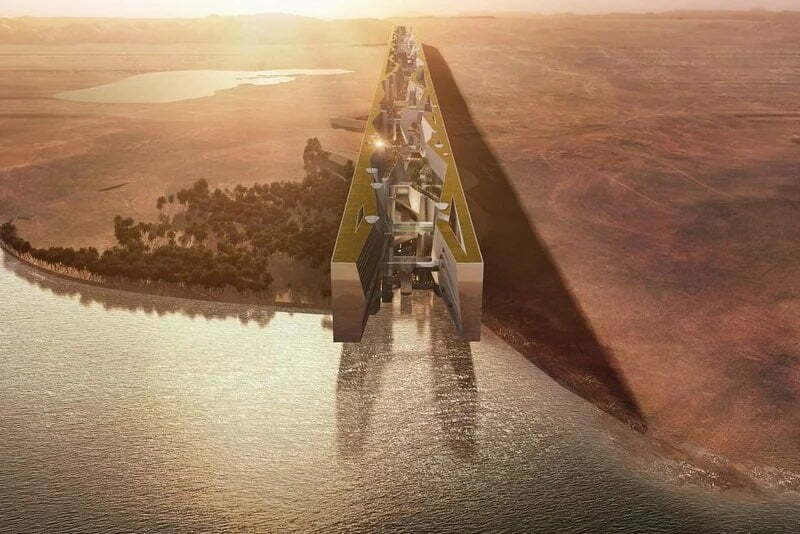
The “outlet” to the sea of the Saudi linear city
The Saudi Crown Prince Mohammed bin Salman is planning an architectural work that surpasses the Egyptian pyramids in size and resonance.
According to the WSJ, the plans being studied by Salman’s architects are mammoth, and would be worth by far the largest structure in the world. It is a very long “line” made up of two parallel skyscrapers and 480 meters high that would extend for 120 kilometers. The name of this complex is Mirror Line, and the intentions of those who are planning it should host about five million people.
The cost? Needless to say, pharaonic. Up to a trillion dollars for what looks like a long golden Eden from the photos, but which could turn out to be a nightmare.
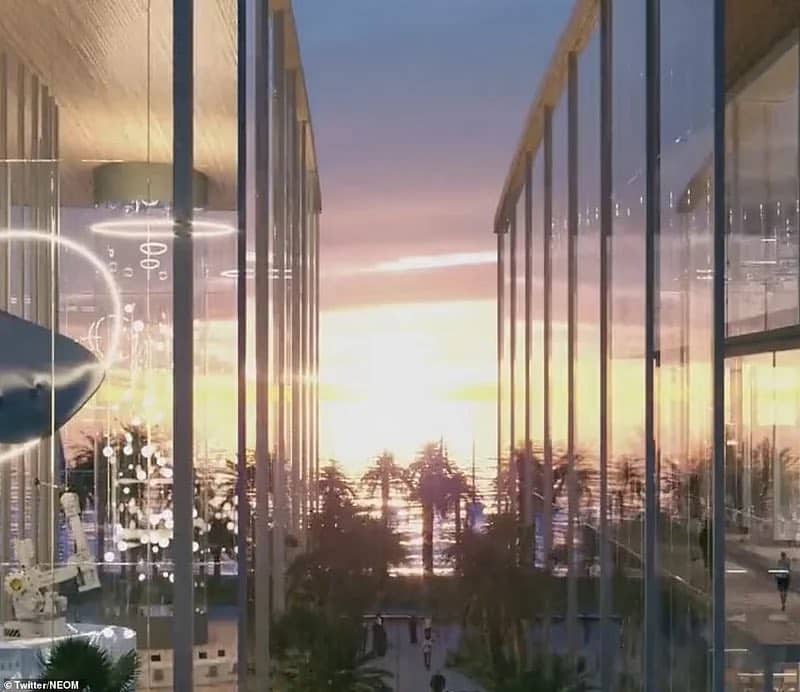
A linear city
The operation, whether or not it is its final form, is part of the Saudi effort to “shake up” a hitherto oil-based economy. I also do not exclude that it may serve to remove the international perception of an illiberal state, which comes to kill (this is the accusation) its political opponents, such as the journalist Jamal Kashoggi.
The fact is that Mirror Line is yet another attempt to create an old ball by Mohammed Bin Salman, that of the “linear city”. An urban settlement viable with its own high-speed railway and equipped with a stadium, marina and other mega structures powered, I read, by renewable energy. It is no coincidence that this project looks like a re-edition (downward) of the first project, that of Neom, a 170-kilometer linear city (we told you about it here, January 2021).
It would be madness, prince
The Saudi prince’s dreams of glory seem to translate into a catastrophic reality if this hypothesis begins to be evaluated. How would the management of a pandemic take place in this “trap” of parallel buildings? What about a possible supply chain problem?
Not to mention the migratory routes of birds and even aquifers: the damage (even unintentional) of a similar structure could be gigantic.
Are we counting on the Saudi prince’s sensitivity to these issues? The question has something of rhetoric, and we add nothing else out of understandable fear.
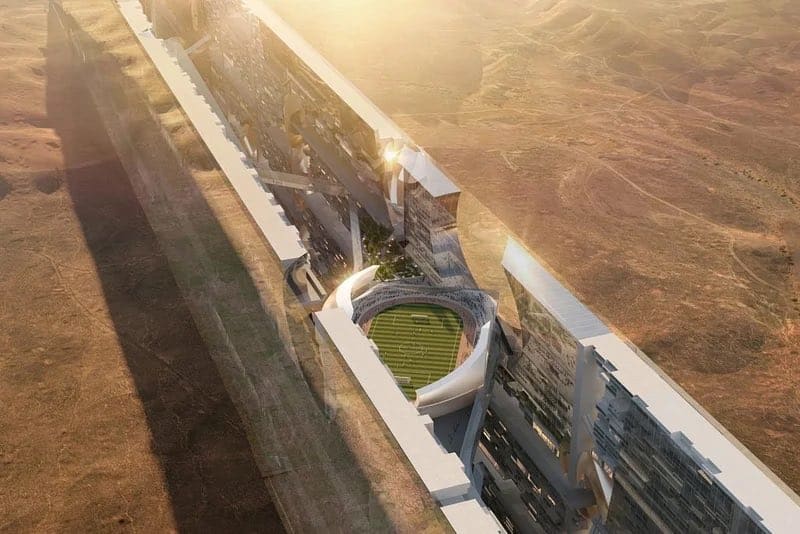
Murabba Project – Gateway to Another World newmurabba.com
 |
 |
Some Noteworthy Things to see in the video:
| Minute 1:28 | Dragon flying above the City |
| Minute 2:08 | Artificial Moon |
| Minute 2:14 | Flying Cars |
| Minute 2:21 | Giant Walking in the City |
| Minute 7:40 | Statement: MURABBA is really a term for Square as in Market/Town/City Square. Old Murabba was actually a square building that was a center of activity and it still exists today in Old Murabba. |
spacer
 |
 |
 |
| Spiraling Tower withing the CUBE/Mukaab | Tower in Riyad that looks like a Rock CAIRN |

The Murabba Palace (Arabic: Qasr al Murabba; the Square Palace) is one of the historic buildings in Al Murabba, Riyadh, Saudi Arabia. The palace is the first building that was erected outside the walls of the old city.[1] It was named after its square with the form of 400 by 400 metres (1,300 by 1,300 ft).[2] It is one of the museums in the city.
History
The palace was built by King Abdulaziz outside Riyadh, being the first major expansion of the city in the twentieth century.[2] Construction was started in 1936 and partly finalized in 1938.[3] It was fully completed in 1945.[4] The construction was supervised by builder Ibn Qabba, but the King also personally involved in the construction process.[5] The palace was intended to be a family residence and court for the king.[6] With the construction of the palace three novel technologies were introduced to the Saudi society: the use of the automobiles as means of transportation, electricity by means of generators and water closets with drainage systems.[2] In order to connect the palace with the city center a concrete road was constructed which was also new in the city.[7] In 1939 electricity, lighting, fans, limited air-conditioning, a central water supply and lavatories were added by the Aramco technicians to the palace.[5]
The king left his former court in Masmak fort when the construction was finished,[8] and used the palace as his residence and court from 1938 until his death in 1953.[9] One of his wives, Hussa bint Ahmed Al Sudairi, also moved with him to the palace in 1938.[10] Another palace, Addeera, was also used as a royal residence.[4]
During the reign of King Abdulaziz Murabba Palace witnessed many official visits and sign of various agreements.[11] A lift was installed into the Murabba Palace in the late 1940s when the king had difficulty in climbing the stairs due to advanced arthritis.[8] It was the first lift in Saudi Arabia.[8] The king appointed one of his sons, Prince Mansour, as emir of the palace.[12]
King Abdulaziz’s successor, King Saud, also used the palace for official activities. For instance, he inaugurated the council of ministers with a ceremony in the Murabba Palace on 7 March 1954.[13]
Location
The Murabba palace is situated two kilometers north of the old city of Riyadh, and its total area was over 16 hectares.[5][14] The area of the palace was later expanded to 30 hectares.[5] In a study dated 2021 the size of the palace is cited as 9,844.64 m2.[15]
The palace is located about half a mile from Masmak fort.[9] The area of the palace was called Murabba Al Sufyan.[16] In the south of the palace there are gardens, and the Batha valley is situated in the east.[16] Wadi Abu Rafie is in the west, and small hills lie on the north of the palace.[16]
Murabba Palace is very close to Al Shamsia mansion which was the residence of Saud Al Kabeer and his wife Noura bint Abdul Rahman, elder sister of King Abdulaziz.[17] In the 1950s the Murabba Palace was connected to Al Nasriyah Farm which is in fact a rural palace in the west of old Riyadh through a stone road.[1]
Layout and style
The building is a complex of palaces used for different purposes, housing two stories with 32 rooms.[16] Overall shape of the building is cubic.[18] It is made up of residential buildings, service facilities and the diwan of the king.[6] These buildings are surrounded by a courtyard.[19] A huge brick wall also surrounds the palace, and there are nine gates.[11] The main gate was originally on the west side, but, later the gate on the southern side was used as main entrance which allowed a short link to the nearby mosque.[4]
The upper floor of the building used for court of the king included audience hall, offices of administrative affairs, communications and guest chambers.[16] The ground floor housed the offices for palace utilities, security and administration.[16]
The building has a plain style[6] and reflects the general features of the traditional Najdi architecture.[4] It also reflects the general characteristics of Najd‘s urban pattern, namely solid masses, covered streets, and the integration of courtyards.[2] The palace was built mainly by bricks, indigenous stones, tamarisk trunk and palm-leaf stalks.[16] The walls of the building were made by straw reinforced adobe, and have engraved ornaments on coating.[4] Local acacia with palm frond matts was used for the ceiling of the palace.[4] The wood beams supporting the ceiling have decorations with yellow, red, and black geometric patterns.[4]
Current usage
A development project was initiated by the Saudi Commission for Tourism & Antiquities in 1999 to renovate the Murabba palace.[20][21] It was converted into a museum and became open to public visits.[22] It was called “living museum” after renovation.[18] It is part of the King Abdulaziz Darat or King Abdulaziz Historical Center.[6][23]
In the current usage, the ground floor includes the guards’ room and stores for food, coffee, wood and other materials needed for cooking.[23] The upper floor is made up of salons and waiting rooms for visitors.[23] There several historic garments and crafts are exhibited.[24] There are also the King Abdulaziz memorial hall and a written and photographic archive centre in the building.[8]
One of the dignitaries welcomed at the Murabba Palace was General Secretary of the Chinese Communist Party Xi Jinping who visited Saudi Arabia in January 2016.[25] On 20 May 2017 the US President Donald Trump and his wife Melania Trump attended a dinner which was organized by King Salman bin Abdulaziz Al Saud at the Murabba Palace.[26]
Master Plan for Riyadh Expo 2030
The Kingdom of Saudi Arabia unveiled the master plan for Riyadh Expo 2030 during an official reception organized by the Royal Commission for Riyadh City in Paris, France on Monday, June 19, in the presence of delegates of 179 member states of the Bureau International des Expositions (BIE).
The plan aims to create an exceptional global experience in the history of Expos as it reflects the importance of Riyadh Expo 2030 and its positive role and embodies the exhibition’s central theme: “Together for a Foresighted Tomorrow.”
The Riyadh Expo 2030 will be held near King Salman International Airport, which is currently being developed, making it easily accessible for visitors arriving there. They can reach the exhibition site within minutes by using the “Riyadh Metro” network, covering all parts of Riyadh city and connecting to one of the three exhibition entrances and the modern road network.

The exhibition pavilions, estimated to be 226, were designed in a spherical shape, with an equator line running through them. This visual approach aligns with the exhibition’s vision, ensuring equal opportunities for all participants.
The exhibition’s design reflects the ancient urban style, history, culture, and nature of Riyadh city. It also showcases the Kingdom’s shared concern with the rest of the world for the climate and its ambition to foresee a future full of potential.
The pavilions’ locations for participating countries at the exhibition will be flexibly determined based on their longitudes. Such design will bring together countries from the north and south of the globe side by side, symbolizing the Kingdom’s important role in facilitating global cooperation.
This will facilitate visitors’ journeys and ensure easy movement between pavilions, public squares, cultural and innovation facilities, food services, rest, and waiting areas in a smooth and flexible manner while covering very short distances.
Moreover, visitors to the exhibition will enjoy strolling through fully shaded corridors with designs inspired by Riyadh’s architectural heritage.
In addition, visitors can stroll through a modern green oasis located within one of the tributaries of Wadi As-Sulai, which passes through the exhibition site. This demonstrates the Kingdom and Riyadh’s commitment to preserving and sustainably developing nature.
In the same context, a prominent landmark will be built at the heart of the main plan for Riyadh Expo 2030, symbolizing “Responsibility for Protecting the Planet.” It will be based on 195 columns representing the number of countries participating in the exhibition. Surrounding this landmark will be three pavilions, each representing the exhibition’s sub-themes of “Prosperity for All,” “Climate Action.” and “A Different Tomorrow.”
The exhibition will also feature the Collaborative Change Corner (C3), an area that will drive innovation and creativity during the seven-year journey leading up to and beyond Riyadh Expo 2030. The C3 aims to showcase how collaboration among the smartest minds in scientific, social, and intellectual innovations can accelerate the changes that will shape our future.
A member of the blueprint team for the Riyadh Expo 2030, Lamia Bint Abdulaziz, told BIE members, “The blueprint will work on developing a version of the Expo that is the most flexible when it comes to visitors’ movement at the site; and the most interactive, collaborative, and sustainable ever, and we will make sure to provide an exceptional experience for visitors to the exhibition. We will also work on enabling full and balanced participation, and with added value for all participating countries, and we will provide unprecedented experience of high quality for more than 40 million visitors.”
“The Riyadh Expo 2030 is inspired by the natural and traditional features, as it was designed around a valley surrounded by a group of pavilions for each country, and provides all participating countries with unlimited opportunities, as the exhibition plan offers a wide range of pavilions of different sizes and types with a commitment to allocate a pavilion for each country,” she said.
“All participants will be able to achieve their priorities and develop pavilions in harmony with the main theme of the Expo and its sub-themes, as the opportunities for exploration will be limitless so that visitors can live the experience of moving to any country in the world and enjoy the accompanying diverse cultural and entertainment events. The exhibition will include international restaurants from around the world and live music performances,” she said.
She also said that the exhibition will include rich technical opportunities for cultural and professional development, adding, “We are planning to launch a participating laboratory in Osaka Expo 2025 and it will continue to help countries deal with recurring challenges in the preparatory period for Riyadh Expo 2030.”
For her part, Expo blueprint team member Eng. Nouf Bint Majid Al-Muneef said, “Our goal in the Kingdom is to organize the first environmentally friendly exhibition that achieves a zero level of carbon emissions. The Riyadh Expo 2030 site will be powered by clean resources that rely on solar energy, and we are developing high standards for resource efficiencies and detailed strategies to enhance biodiversity, eliminate food waste, and ensure green waste management and recycling.”
“We will enable and help finance and build various partnerships that enhance the development phase and the objectives of the exhibition, based on the collaborative angle of change that we call the tripartite vision, as we will finance and incubate it in order to build international projects starting from 2025,” she added.
The Kingdom has announced that it aims to make the Riyadh Expo 2030 the most sustainable and influential Expo ever, in line with its climate commitments to achieving carbon neutrality, a goal that is clearly reflected in the master plan for the exhibition that is linked to international standards of sustainability, including urban afforestation, the use of treated water, and the provision of new energy sources.
The blueprint for the design of the exhibition also takes into account the reuse of the site with the aim of developing an innovative urban model that guarantees sustainability and enhances innovation and creativity.
pacer
Showing results for Mukaab meaning in Urdu
Search instead for Muka’ab meaning in Urdu
پوشیدہ وہ مجسم شکل، جس کی چھ مربع و متوازی سطوح ہوں
spacer
Meaning of mukab in English – Rekhta Dictionary
lilqital walshijar walmuqawamat walmakasib waltadakhul
مکعب
Persian
| Dari | مکعب |
|---|---|
| Iranian Persian | |
| Tajik | мукааб (mukaab) |
Etymology
Borrowed from Arabic مُكَعَّب (mukaʕʕab).
Adjective
مکعب• (moka’ab)
Noun
مکعب• (moka’ab) (pluralمکعبها (moka’ab-hâ))
Further reading[edit]
Hayyim, Sulayman (1934), “مکعب”, in New Persian–English dictionary, Teheran: Librairie-imprimerie
Mokaab Meaning in English
The word “Mokaab” in English means “Cube” and in Urdu script, it is written as “مکعب”. Similar words to mokaab are commonly used in daily conversations, such as . The synonym for mokaab is ” Block and Dice”.
spacer
Cube Definition & Meaning In English
- (n.) The product obtained by taking a number or quantity three times as a factor; as, 4×4=16, and 16×4=64, the cube of 4.
- (n.) A regular solid body, with six equal square sides.
- (v. t.) To raise to the third power; to obtain the cube of.
Mokaab In English
Mokaab is a roman term that finds extensive usage in various sentences and different contexts. In English, the mokaab is referred to as “Cube” and it is driven by the English language. This page provides a comprehensive description of mokaab meaning in English and Urdu both, making it an excellent resource for anyone looking to learn more about the term.
However, finding the exact meaning of any word online can be a little tricky, especially since each word may have more than one meaning. Nevertheless, the definition of mokaab stated above is reliable and authentic, making it a valuable resource for those who seek to learn more about the term. Moreover, this page offers mokaab word synonyms, which can help further enhance the understanding of the term.
spacer
The Kaaba Black Stone: A Holy Stone from Outer Space?
UPDATED 3 APRIL, 2020 – 19:47 BRYAN HILL
Every day, five times a day, Muslims across the world face the holy site of Mecca and pray. Mecca is believed to be the birthplace of the Prophet Muhammad but when followers visit the site, it is not actually Mecca they are facing but a building called the Ka’aba. The Ka’aba is a mosque and on one corner of this sacred building, is a cornerstone known as the Black Stone. Its history is shrouded in mystery and there is much speculation over what the stone might be. Many Muslims believe the stone is in fact a meteorite possessing supernatural powers.

The Hajj Pilgrimage Ritual
Millions of Muslims travel to Mecca, Saudi Arabia every year and in a single day, Mecca is capable of attracting over two million Muslim followers for the annual hajj pilgrimage, considered one of the five pillars of Islam .
 (left) Muslims praying around the Ka’aba in Mecca, Saudi Arabia. (
(left) Muslims praying around the Ka’aba in Mecca, Saudi Arabia. (
There, they gather around the Ka’aba, often written simply as Kaaba, a cubic-shaped building at the center of Islam’s most sacred mosque, Al-Masjid al-Haram. During the ritual of the hajj, pilgrims must walk around the Kaaba seven times in a counterclockwise direction, a ceremonial practice that has been going on for fourteen centuries.
The Kaaba measures 50 feet (15.2 meters) high, 35 feet (10.7 meters) wide and 40 feet (12.2 meters) long. It is covered with a black silk cloth, known as the kiswa and decorated with gold-embroidered calligraphy. On the southeast side of the building is a gold door. Inside, the floor is made of marble and limestone and has three pillars.
The Kaaba Black Stone
The Kaaba is built around a sacred Black Stone which is tucked away in the eastern corner about five feet off the ground. Muslims believe the prophet Mohammad once kissed the stone and during their mandatory, once in a lifetime (at least), trip to Kaaba, they try to kiss the Black Stone if possible.
If they are unable to, they simply point to it every time they pass on their seven-circle journey around the Kaaba. Each time pilgrims pass the Black Stone they recite a prayer from the Qur’an: ‘In the name of God, and God is supreme.’ Non-Muslims are strictly forbidden from touching it and most of the year the Kaaba is covered in black cloth.
 Most of the year the Kaaba is covered in black cloth.Adobe Stock)
Most of the year the Kaaba is covered in black cloth.Adobe Stock)
The Cause of the Ka’aba Black Stone’s Color
The stone is often described as a fragmented dark rock somewhere around two feet (0.61 meters) in length. Its surface is blackish in color, but there is speculation that this is due to how much it has been touched, along with the oils with which it is anointed. According to Muslim tradition , the stone was originally white, but turned black from being in a world where it absorbed humanity’s sins.
First described in Western literature in the 19th century, Swiss traveler Johann Ludwig Burckhardt visited Mecca in 1814 and provided a detailed description of the Black Stone in his 1829 book ‘ Travels in Arabia’:
“It is an irregular oval, about seven inches in diameter, with an undulated surface composed of about a dozen smaller stones of different sizes and shapes, well joined together with a small quantity of cement and perfectly well smooth; it looks as if the whole had been broken into as many pieces by a violent blow and then united again.”
History of the Ka’aba Black Stone
Muslims believe that Allah ordered the Kaaba to be constructed. The story goes that Abraham built the mosque with his oldest son, Ishmael, in the likeness of Allah’s home in heaven.
Purportedly the oldest mosque on Earth, it is believed to have been originally used by pagans before Islam came into existence. According to Islamic tradition, the stone was set intact into the Kaaba’s wall by the Islamic prophet Muhammad in the year 605 AD.
Muslims also believe that the Kaaba stone was once part of the stones of heaven. There are various versions of its story of origin, all similar to one the another. When Adam was banished from the Garden of Eden , he was filled with sin. The Black Stone was given to him to erase this sin and allow him entrance back into heaven. Some instead believe the ancient stone was brought from a nearby mountain by the archangel Gabriel.
Over the passage of time, the stone has undergone significant damage. During the Umayyad siege of Mecca in 683 AD it is said to have been struck and smashed to pieces by a stone fired from a catapult.
In 930 AD it was stolen by a small Shiite sect called the Qarmatians, who took it back to their base in Hajar, modern day Bahrain. According to the Ottoman historian Qutb al-Din, the Qarmatian leader, Abu Tahir al-Qarmati, set the Black Stone up in his own mosque, with the intention of redirecting the hajj away from Mecca. This failed because pilgrims continued to venerate the spot where the Black Stone had been. So the pieces were later returned.

Drawing of Mecca (1850).
There are even stories about people being killed for trying to make contact with the stone. In the 11th century, a man allegedly attempted to smash it and was killed on the spot, causing only slight damage to the stone.
According to the Swiss traveler Johann Ludwig Burckhardt, in 1674 someone smeared the Black Stone with excrement so that “everyone who kissed it retired with a sullied beard”. Persians were suspected of being responsible and were the target of curses from other Muslims for centuries afterwards.
Today, the stone is still broken up into several pieces , with estimates ranging from seven to as many as fifteen fragments. These are held together by a silver frame, which is fastened to the stone by silver nails.
 (Left) The Ka’aba Black Stone with its frame ( Harry Marlan/Google+ )
(Left) The Ka’aba Black Stone with its frame ( Harry Marlan/Google+ )
Is the Kaaba Black Stone a Meteorite?
Since no scientific studies have been allowed on the stone, it is only possible to speculate what it could be. Theories have ranged from the stone being basalt, agate, or obsidian rock, to an alien artifact. One theory proposes that the stone is a meteorite worshiped by the pre-Muslim, pagan Arabs.
According to Anthony Hampton and his team of geologists at Oxford University, “Part of the fog surrounding this stone is that the stone ’s caretakers haven’t allowed any scientific tests to be performed on the stone, for obvious cultural and religious reasons.”
Thus, attempts have been made to find other ways to obtain information about it. Local samples of sand taken from a 2 km (1.2 mile) radius of the stone, revealed quantities of iridium, a metal found in meteorites with an abundance much higher than its average abundance in the Earth’s crust.
Falling Stars and Black Stone: Humanity’s Worship of Meteorites
Also found were many shatter cones, a rare geological feature, only known to form in the bedrock beneath meteorite impact craters or underground nuclear explosions.
SPACER

Drawing of the front view of the Black Stone.
However, another study done by Robert S. Dietz and John McHone at the University of Illinois in 1974 concluded that the Black Stone was probably not a meteorite or supernatural in origin. An anonymous Arab geologist who made the Hajj and examined the stone, saw diffusion banding, which points to it being an agate rock.
While today there is no consensus regarding its makeup, the Black Stone of the Kaaba is probably the most well-known holy rock in the world and it continues to be the centerpiece of the sacred Islamic pilgrimage.
Top Image: The Kaaba in Mecca, Saudi Arabia. Source: Aviator70 /Adobe Stock
By Bryan Hill
spacer
SATURN – HEXAGON – DELPHIG.O.- GRAPENE OXIDE |
spacer
WHAT IS THE BLACK CUBE? WHAT DOES IT HAVE TO DO WITH SATURN?
Source: Alien.Wars. Saturn is the 6 th planet in our solar system (according to the scientists) and a cube has six sides. Funny how these things seem to work out. The north pole of Saturn has a 6 sided ring around it. More videos you may find interesting:
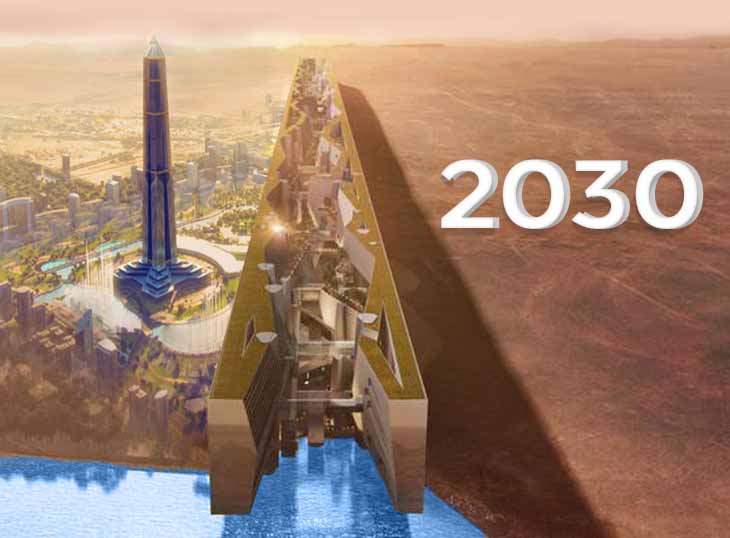
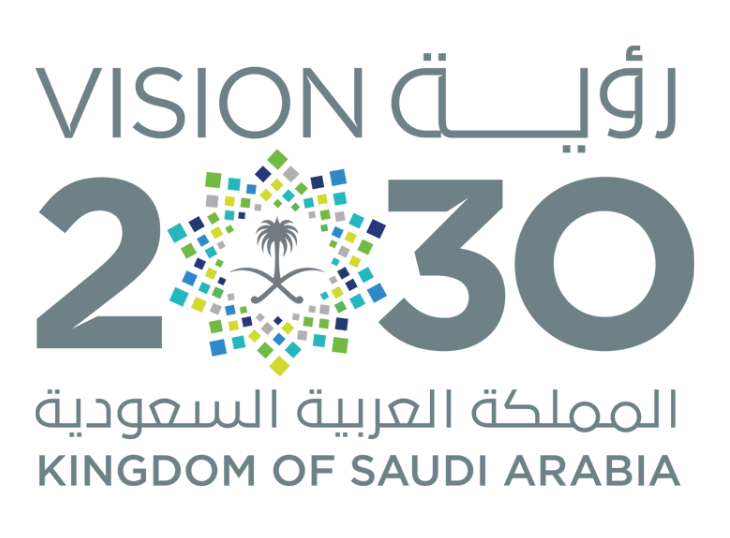
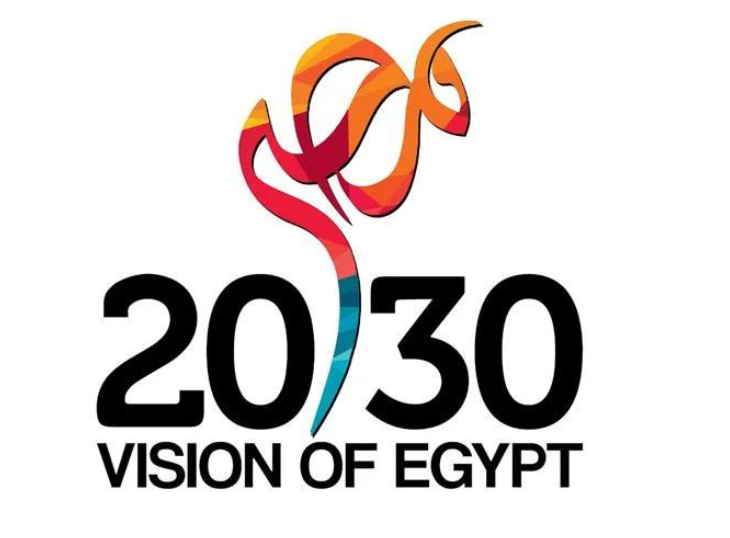
 (2023 SHOCKING Progress)
(2023 SHOCKING Progress)